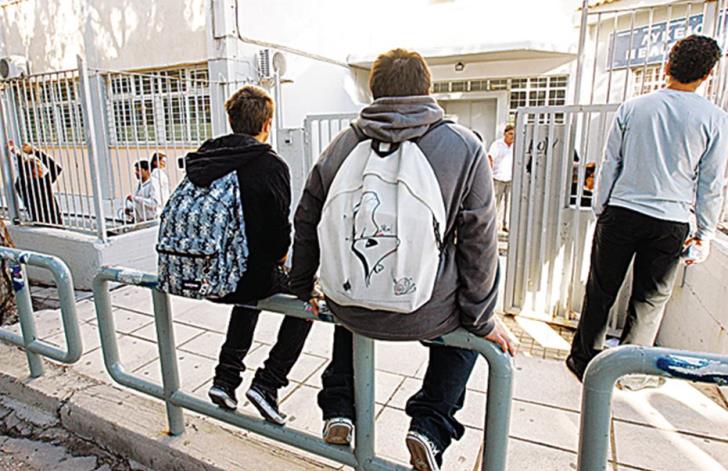By Lefki Kourea anf Evel Neocleus*
Human bonding or human connection is an intrinsic emotional need that persists throughout a person’s life. In Psychology, this is known as ‘attachment.’ When considering students and school environments, any adults such as teachers could presumably take on the role of an attachment figure in students’ learning development.
How do exactly teachers play this important role?
Students perform better when they believe teacher genuinely cares about their well-being and success. This means that:
(a) teachers consider positive relationships an important and secured framework that predicts student success; and
(b) teachers focus equally on the cognitive (i.e., academic skills) as well as on the socio-emotional and behavioral domains while interacting with students.
What actions should teachers perform when interacting with students formally and informally across classroom and non-classroom settings?
First, teachers assume the responsibility of proactively initiating positive relationships. Their behaviours model what is expected in student behaviors. They engage positively with all students by finding times to speak with them as a group or individually, by taking genuine interest in them and their values (‘they know them more than pen to paper’), are laughing more, and are angry less. Second, teachers use certain research-based behavioral strategies to strengthen student-teacher relationships and provide healthy support to all students, including the challenging ones. Below, we target two such behavioural strategies: praise and punishment.
Praise
There is no universal definition for praise. We can define it here as a verbal approval a teacher makes following a student’s response. Verbal statements express recognition or admiration, and help students feel good about themselves. According to leading authorities in the Science of Behavior Analysis (Cooper, Heward, & Heron, 2020), praising student behavior may increase the probability for that behavior to occur again in the future. Studies have repeatedly demonstrated the positive impact of praise on increasing student social behaviors (e.g., on-task behavior) and student academic performance, as well as decreasing inappropriate behaviors (e.g., being tardy). However, not all praise is created equal. What research and empirical evidence shows is that praise is most effective when it is behavior-specific, authentic, and immediate. It is delivered in a positive tone and with a smile. Examples of behavior-specific praise are: “Thank you for waiting patiently in line!” “I like the way you are raising your hand!” “Nice job on finishing up your workbook exercise on time!” Such praise statements focus on concrete behaviors that adults have already paid attention to.
Punishment
According to the Science of Behavior Analysis, punishment is a behavioral principle that refers to applying negative consequences for decreasing an inappropriate behaviour. Negative consequences may include spanking (give physical pain), threatening (use psychological aggression), losing privileges or items (take away preferred item/activity). All of these are potentially punishing in the sense that when applied, an inappropriate behaviour may decrease. However, as in the case of praise, not all punishment is created equal. Some forms of punishment have aversive consequences, and research has repeatedly demonstrated their negative short and long-term consequences on a student’s learning development and mental health. These undesirable forms of punishment include manipulative, psychologically aggressive (e.g., threatening, insulting) or physically violent (e.g., hitting) actions to manage a student’s behaviour. This is known as harsh punishment and this is NOT what we are supporting in this article.
Here, we focus on punishment-based strategies that provide positive corrective feedback to students while maintaining respect and dignity towards them. For instance, when a student shouts out the answer in class, we need to respond either by re-directing the student of the expected behaviour or by ignoring his inappropriate response (i.e., shouting out) and acknowledging another student’s appropriate response (i.e., raising hand). Re-direct is one corrective strategy that is teaching student what he is expected to do and asks him to do it. We provide corrective feedback in a neutral demeanour and tone of voice. When inappropriate behaviour increases in frequency and intensity, then teachers need to learn when to step away and take a break in order to not escalate the situation. When chronic inappropriate behaviours occur in high frequency (e.g., tardiness, disrespect, disobedience), students may be taken away privileges temporarily BUT this may not be sufficient for students to minimize their errors. Delivering aversive consequences makes a teacher’s instruction less effective. When a student misbehaves, she makes a social error. Teachers correct errors by teaching them and not simply stopping them to occur again (i.e., taking away time).
What does research say about the use of praise and punishment in schools?
As far as we know, there are no publicly available data documenting the use of praise and punishment in our schools in Cyprus. Data yielded from a large-scale research study (Scott, Hirn, & Cooper, 2017) in the United States, conducted from 2008-2015 and observing various levels of interactions among 6,752 student-teacher duads, showed that an average elementary student receives a minimum ratio of 3 to 1 positive-to-negative teacher feedback in class while middle-school (i.e., gymnasium) and high-school (i.e., lyceum) students receive 1.74 to 1 and 0.65 to 1 positive-to-negative teacher feedback, respectively. Stated differently, teachers in elementary schools tend to be more positive in their interactions with students in class compared to teachers in secondary schools. Further, latest research (Caldarella et al., 2020) has verified that when teachers’ praise-to-reprimand (positive-to-negative) ratio increases, we tend to see increases on students’ on-task behavior and a more positive learning environment. In fact, these researchers found that student appropriate behaviour would improve when teachers either used 3 to 1 or 4 to 1 praise-to-reprimand ratio during classroom interactions.
In sum, if we would like to see improvements in our student academic and social outcomes in our school environments, our goal should be to re-consider the way we have been interacting with our students as well as managing their behaviours inside and outside of classrooms. Thus, the systematic use of behaviour-specific praise, the re-direction, as well as the consistent implementation of 4 to 1 praise-to-reprimand ratio set the stage for a preventative and supportive learning environment for all, including the ones with chronic and severe problem behaviours.

*Lefki Kourea, PhD (Assistant Professor of Special Education, University of Nicosia) [email protected]

Evel Neocleus, MA (Registered School Psychologist, Lic. No. 289, Parent-Child Center) [email protected]






